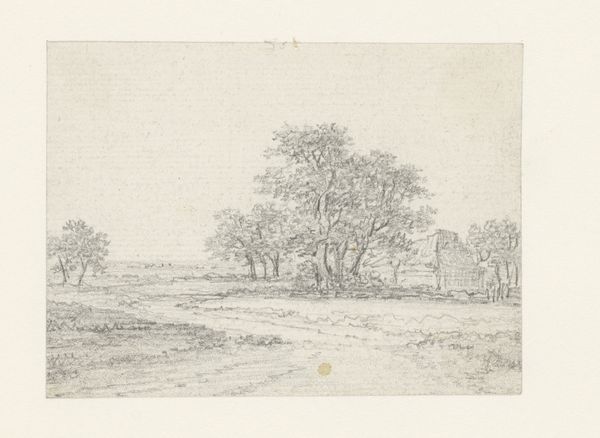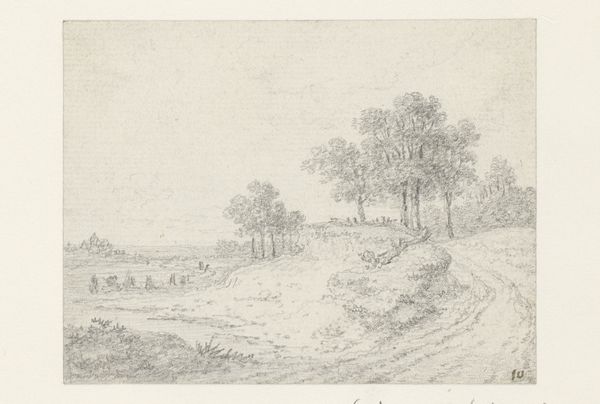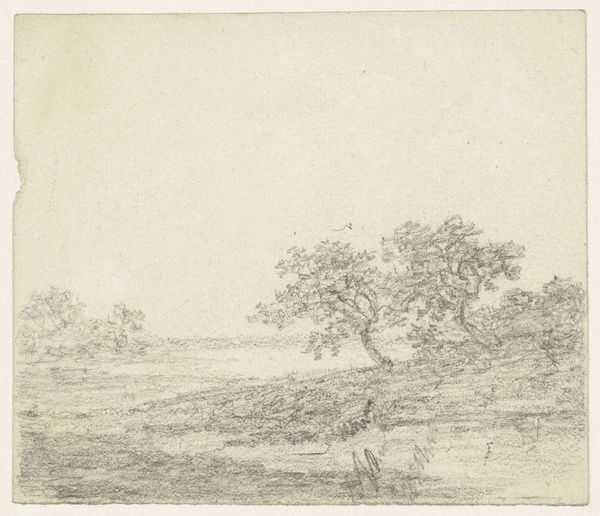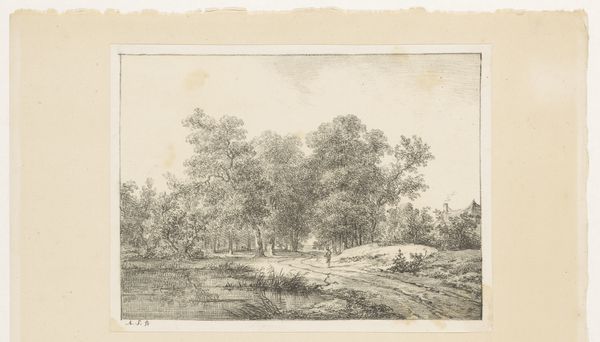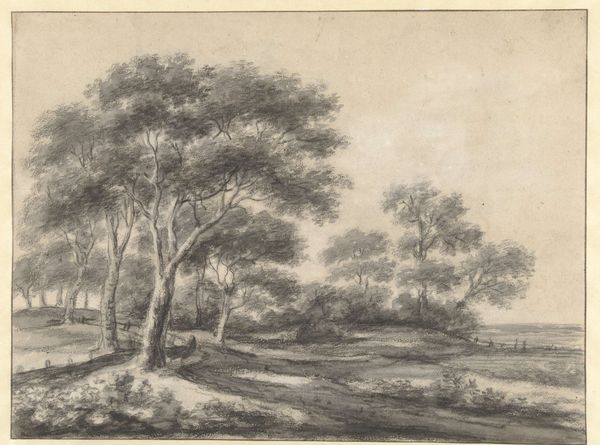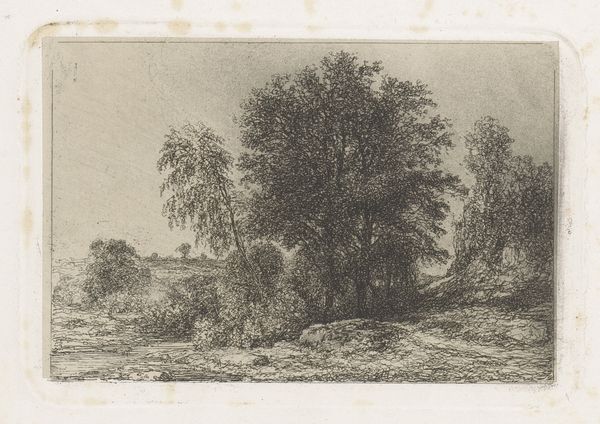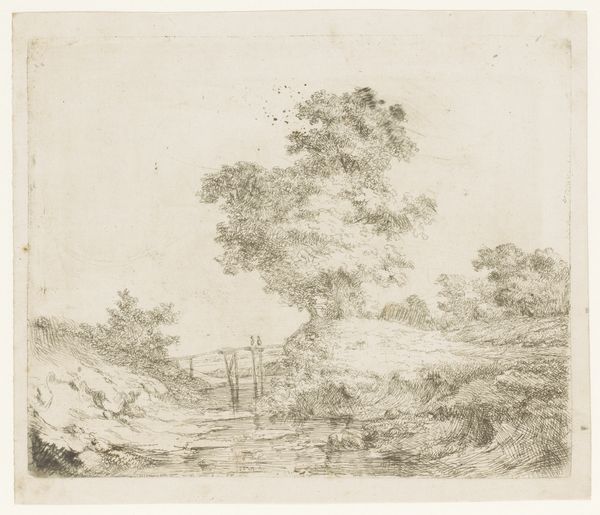
drawing, pencil, graphite
#
drawing
#
pencil sketch
#
landscape
#
etching
#
romanticism
#
pencil
#
graphite
#
realism
Dimensions: height 71 mm, width 96 mm
Copyright: Rijks Museum: Open Domain
Curator: Before us is a drawing by Georges Michel, titled "Landschap met landweg," dating from between 1773 and 1843. The artwork features a landscape rendered in pencil and graphite. Editor: It’s unassuming at first glance, almost monochromatic. But something about the path… it leads the eye directly into the heart of the composition, making it feel both intimate and expansive simultaneously. There is such a calmness there. Curator: I think the path and its symbolism would not be unnoticed to people of this period. Considering the political and social upheaval happening across Europe during Michel's time, this seemingly simple landscape speaks volumes about access, ownership, and perhaps even the yearning for a more equitable distribution of land and resources. A road represents more than just a route; it suggests potential and connection to broader struggles. Editor: And the cluster of trees along that path acts as such a strong anchor. Trees, since ancient times, were symbols of life, knowledge and endurance, often acting as an axis mundi, a connection between different planes of existence. It makes one wonder about what specific role those archetypes might play, during a period of revolution? Are those a beacon of hope, a place of knowledge? Curator: Precisely. The choice of subject and its execution raise crucial questions about the role of art during a period of revolutionary changes. I wonder what kind of audience would see this landscape in a time of upheaval? Is it the artists? Editor: I wonder about the kind of audience that the artists, or Michel, expected to receive this work and this kind of reflection... How different might it be from a contemporaneous interpretation. It all becomes very cyclical! Curator: This perspective offers us a valuable glimpse into the socio-political forces influencing artistic creation in the late 18th and early 19th centuries. Michel uses something seemingly peaceful as a call for reflexion on the state of society and ownership. Editor: Ultimately, the evocative power lies in the convergence of the landscape’s timeless symbolism and its resonance within a specific historical and social context, offering continuous dialogue.
Comments
No comments
Be the first to comment and join the conversation on the ultimate creative platform.

